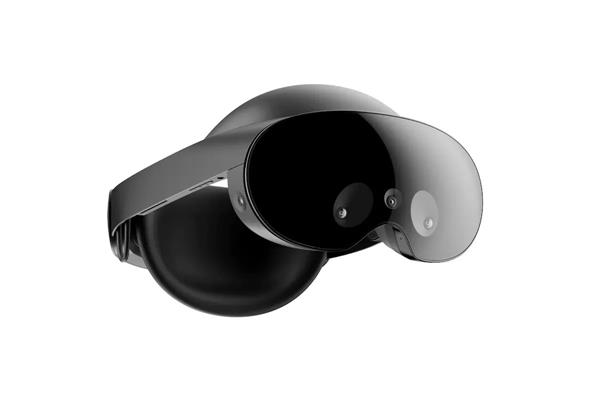Meta announces new virtual reality headset with eye tracking and facial expressions
Meta announces new VR headset with eye tracking and facial expressions, enabling more realistic and immersive virtual experiences.
Meta has announced a new virtual reality (VR) headset, the Meta Quest Pro, which features eye tracking and facial expressions. This is a significant development in VR technology, as it has the potential to make virtual experiences more realistic and immersive.
 [Meta Quest Pro VR headset. Image source: Meta]
[Meta Quest Pro VR headset. Image source: Meta]
Eye tracking is a technology that tracks the movement of a person's eyes. This can be used for various purposes, such as controlling a device with your eyes or improving the accuracy of VR experiences. In the case of the Meta Quest Pro, eye tracking will be used to improve the realism of avatars and make them more expressive.
Facial expressions are another important part of human communication. The Meta Quest Pro will use facial tracking to map the user's facial expressions to their avatar in real-time. This will allow users to communicate more naturally with each other in VR.
Meta has said that the Quest Pro will be the first in a new high-end class of VR headsets. It is expected to be released in October 2022 and will cost $1,500.
Potential applications of eye tracking and facial expressions in VR
Eye tracking and facial expressions have a wide range of potential applications in VR. Here are a few examples:
Privacy concerns
The use of eye tracking and facial expressions in VR raises some privacy concerns. For example, it is possible for companies to use this data to track how users are interacting with their products and services or to target them with personalized advertising.
Meta has said that it is committed to protecting user privacy. The company has said that the Meta Quest Pro will not use eye tracking or facial expressions to collect data about users without their consent. Additionally, Meta has said that users will be able to opt out of eye tracking and facial expressions altogether.
Conclusion
Meta's new VR headset, the Meta Quest Pro, is a significant development in VR technology. The headset's eye-tracking and facial-tracking features have the potential to make virtual experiences more realistic and immersive.
However, it is important to be aware of the privacy concerns associated with these technologies. Users should carefully review Meta's privacy policies and make sure that they understand how their data is being used.
Overall, the Meta Quest Pro is a promising new VR headset that could push the boundaries of what is possible in VR. It will be interesting to see how developers and users adopt the headset's new features in the coming months and years.